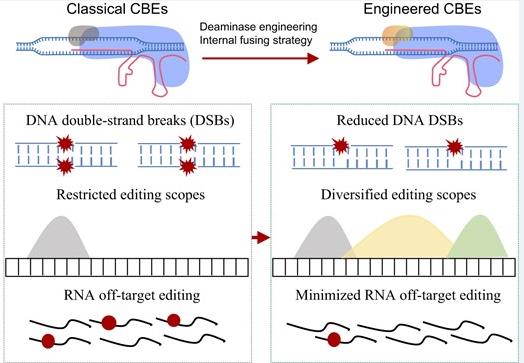Cytosine base editors (CBEs), which enable precise C-to-T substitutions, have been restricted by potential safety risks, including DNA off-target edits, RNA off-target edits and additional genotoxicity such as DNA damages induced by double-strand breaks (DSBs). Though DNA and RNA off-target edits have been ameliorated via various strategies, evaluation and minimization of DSB-associated DNA damage risks for most CBEs remain to be resolved. Here we demonstrate that YE1, an engineered CBE variant with minimized DNA and RNA off-target edits, could induce prominent DSB-associated DNA damage risks, manifested as γH2AX accumulation in human cells. We then perform deaminase engineering for two deaminases lamprey LjCDA1 and human APOBEC3A, and generate divergent CBE variants with eliminated DSB-associated DNA damage risks, in addition to minimized DNA/RNA off-target edits. Furthermore, the editing scopes and sequence preferences of APOBEC3A-derived CBEs could be further diversified by internal fusion strategy. Taken together, this study provides updated evaluation platform for DSB-associated DNA damage risks of CBEs and further generates a series of safer toolkits with diversified editing signatures to expand their applications.


paper link: https://doi.org/10.1093/nar/gkad855